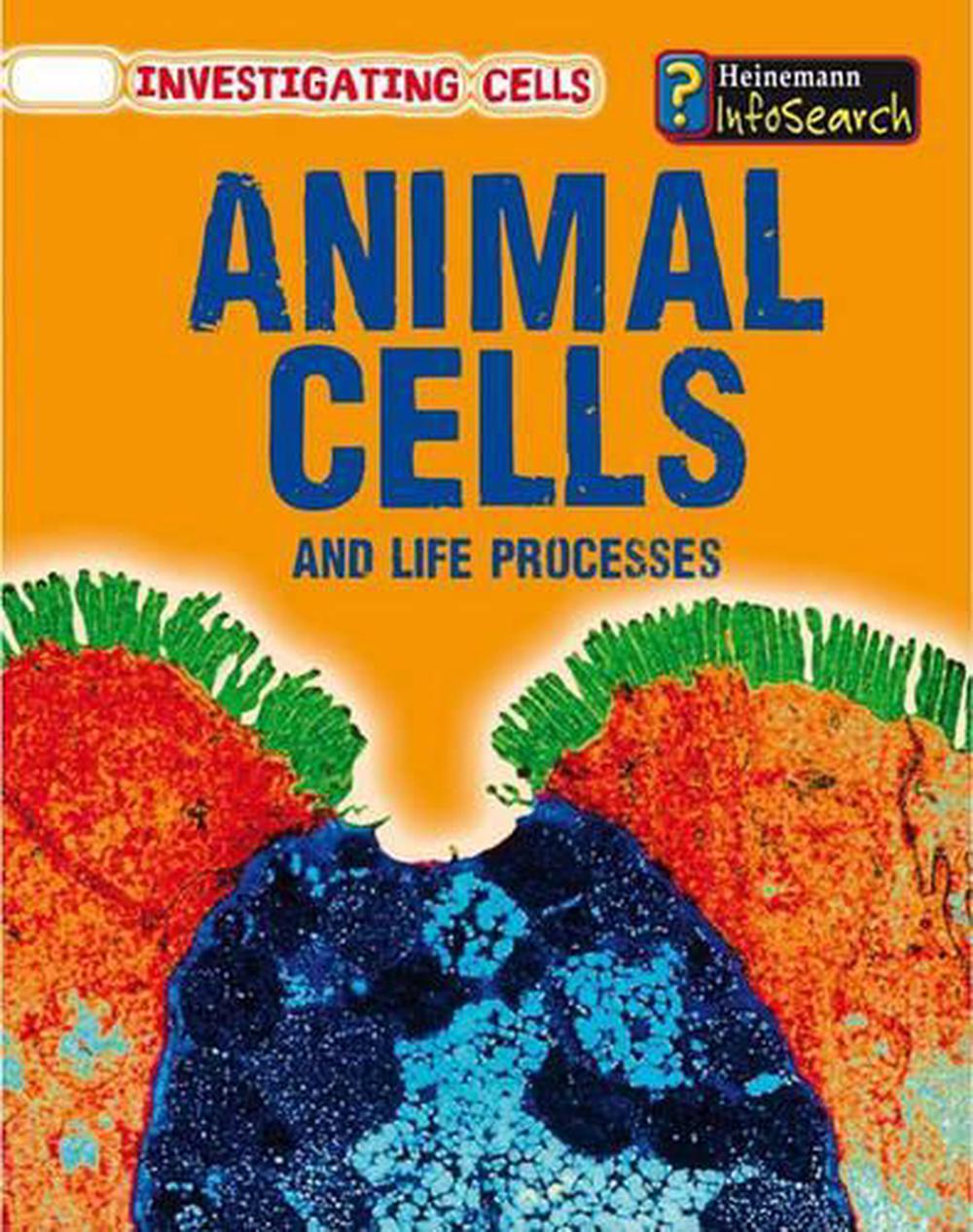
Animal Cells and Life Processes
by Barbara A. Somervill
This book explores the features of the animal cell and includes information about life processes such as respiration.
Hardcover
English
Brand New
Publisher Description
This book explores the features of the animal cell and includes information about life processes such as respiration.
Table of Contents
What is a cell? -- What are the parts of an animal cell? -- How do cells take in and use food? -- What products do animal cells make? -- Can an animal really have only one cell? -- How are we different from amoebas? -- What messages do cells send in an animal's body? -- If cells do not grow, how do animals get bigger? -- Why do cells need water? -- How do cells get rid of waste?
Review
Much like the cells they discuss, each volume in this attractive series is complete unto itself. Taken together, the titles comprise a larger "organism," a very thorough overview of cells and how they function. This is not casual reading. Each chapter answers a key question on pages dense with text. But, these books are neither overwhelming nor stodgy. The abundant graphic matter - photographs, diagrams, charts, and graphs - work together with the text to create visually appealing pages. The series would be very useful in any kind of formal investigation of the topic and yet attractive enough to encourage browsing. The volume DNA and Heredity covers "Overies and Eggs" and "Testicles and Sperm" and does mention, without going into detail, that sexual intercourse is the process by which these components are brought together. Overall, this series is exceptionally well done. Bibliography. Glossary. Websites. Index. Starred Review. --Richard Parker, Media Specialist, Laytonsville (Maryland) Elementary School Library Media Connection March/April 2011-- "Library Media Connection"
Seldom do I become so excited about a series that I call the individual titles my babies and show them off to everyone around me. The Investigating Cells series by Heinemann has caused this state of delirium. The Investigating Cells series was an answer to my requests / pleas / demands/ even whines for more books directly related to middle school science cell studies. The first year I arrived at JFK the entire curriculum for seventh graders seemed to revolve around cells. At the end of the year, one of the science teachers used grant money to provide tours of a life-size cell her students spent hours building. The library, however, was not able to support an in-depth study of cells, so I started to request more books from various publishers. Heinemann answered my call with these titles: - Animal Cells and Life Processes - Cell Systems - Plant Cells and Life Processes - DNA and Heredity - Cells and Disease These titles are exactly what I needed. The covers are appealing with colorful illustrations of microscopic views of cells. Each title highlights major achievements of several scientists. There is a variety of information packaged in ways to engage the readers. Charts, captions, text boxes, and narratives lead the reader through an in-depth exploration of each of these areas of cell study. Students have enjoyed reading these titles. I have watched them avidly pouring over the text and re-reading sections. Students have compared the illustrations and photographs with what they've seen under microscopes. Several commented that looking at the photographs was better than looking at the slides because the photos were focused and detailed, while looking through a microscope could be a hit-or-miss experience. I double-checked my collection and the only other recent series of titles focusing on cells was published by Rosen in 2005. I'm going to keep my eyes out for other cells series. Be sure to let me know if you've seen a great one recently. -Diane Chen School Library Journal11/30/2010-- "School Library Journal"
These utilitarian introductions are constructed in a question-and-answer format (frequently abandoned when subjects are too broad for one-or-two paragraph answers), supported by simplified diagrams of cell structures and large macro- or micro-photographs. The authors focus mainly on human cell structures and functions, though most also include brief mentions of single-celled creatures, other animals, and even-despite an entire volume devoted to them-plants and fungi. Each volume features thumbnail side profiles of a few prominent researchers, a generous selection of further resources, and three-to-five suggestions for experiments or enrichment activities. Though there are no duplicate passages or pictures in these volumes, the fine topical divisions make a certain amount of overlap unavoidable. Still, serious students will find the books useful surveys of various aspects of cell biology. -John Peters, formerly at New York Public Library School Library Journal November 2010-- "School Library Journal"
Review Quote
These utilitarian introductions are constructed in a question-and-answer format (frequently abandoned when subjects are too broad for one-or-two paragraph answers), supported by simplified diagrams of cell structures and large macro- or micro-photographs. The authors focus mainly on human cell structures and functions, though most also include brief mentions of single-celled creatures, other animals, and even-despite an entire volume devoted to them-plants and fungi. Each volume features thumbnail side profiles of a few prominent researchers, a generous selection of further resources, and three-to-five suggestions for experiments or enrichment activities. Though there are no duplicate passages or pictures in these volumes, the fine topical divisions make a certain amount of overlap unavoidable. Still, serious students will find the books useful surveys of various aspects of cell biology. -John Peters, formerly at New York Public Library School Library Journal November 2010
Details

